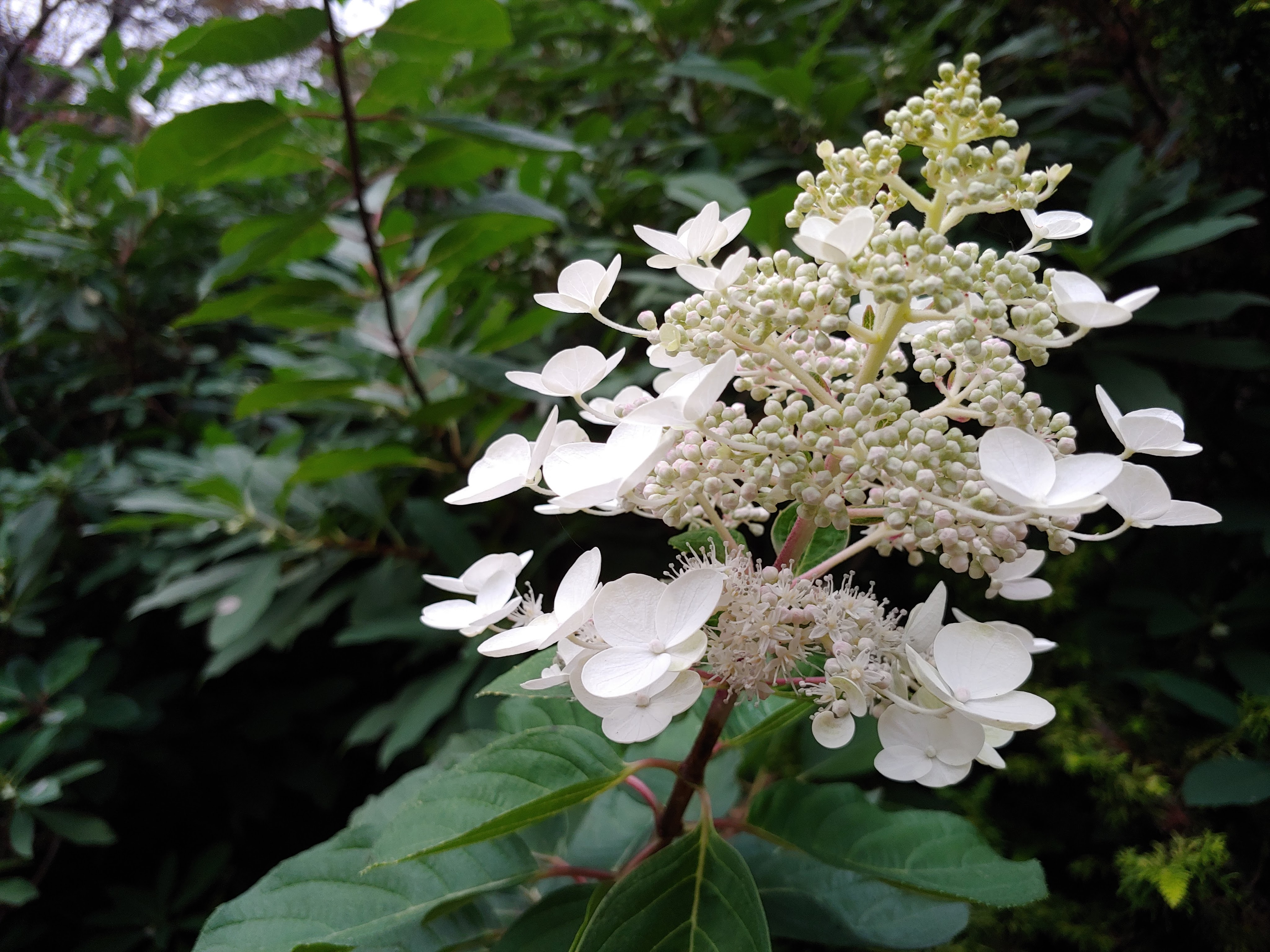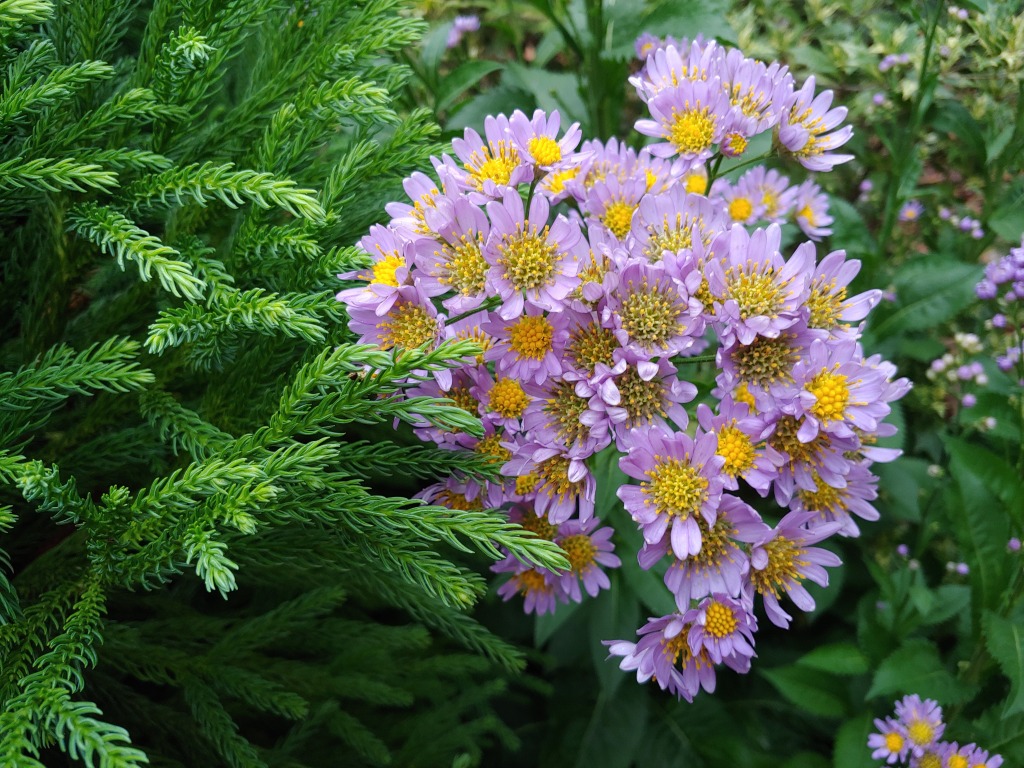Autumn leaf color of ‘Wildfire’ blackgum (Nyssa sylvatica ‘Wildfire’, below) is inferior to the native, but still the mottled coloring is glorious in mid-October as other trees in the garden just begin to show the earliest color changes. New leaves of ‘Wildfire’ are colorful through the spring and early summer, so while it falls short in autumn, the tree is splendid at other times.

Also, ‘Wildfire’ is vigorous in growth, particularly when purchased in a container where the chances for transplant problems common to blackgums are avoided. In damp ground along the rear property line the blackgum flourishes, and unfortunately it will soon overwhelm a slow growing ginkgo that I once supposed was adequately distanced. While other trees placed too close will hold their own, the poor ginkgo and its glowing yellow autumn leaves will soon be lost.

With common witch hazels (Hamamelis virginiana, above) in varying degrees of shade, ones in more sun are flowering while others are not likely to show color for several weeks. While winter flowering witch hazels flower after leaves have dropped, leaves remain on our native common witch hazel, slightly obscuring, but certainly not hiding the display. With the variety of witch hazels in differing exposures, one or the other will be flowering from today until early March, with winter flowering types most prized when there are few other flowers in the garden.

A seedling of ‘Tardiva’ hydrangea (Hydrangea paniculata ‘Tardiva’, above) peeks out from under a wide spreading paperbush (Edgeworthia chrysantha) beside the koi pond. Several attempts to remove this and another large seedling have been unsuccessful with limited access to chop out the roots, so the vigorous hydrangea must be pruned several times through the summer. Of course, sometimes I miss, and with ‘Tardiva’ flowering on new wood there are a few blooms appearing weeks after flowers of the nearby parent have faded.

I am never in a hurry for the autumn leaf drop, but badly spotted leaves of mophead hydrangeas (Hydrangea macrophylla, above) provoke second thoughts. While I often fail to do so, this summer I made a halfhearted effort to deadhead spent flowers, doing so by sloppily snapping off the faded blooms by hand, so now several mopheads are reblooming, though against the backdrop of black spotted leaves.

Again, I am very pleased by the resurgence of a once failing clump of ‘Jindai’ aster (Aster tataricus ‘Jindai’, above) that has been moved several times as neighbors encroached on the late blooming aster. The fading clump was dug and split into several, then planted in varying degrees of sun and soil dampness since none seemed ideal. Certainly, one or the other would survive, and possibly one would flourish. Surprisingly, all are growing exceptionally, with the tall flower stalks standing above neighboring shrubs.
Nyssa sylvatica was another item we tried to grow here, but discontinued because we could not sell any. People here just do not know what it is. I do not remember the name of the one cultivar we had. We also had a few that were grown from seed, just for our own landscape. Since then, I have seen only a few in landscapes. They were likely brought in with a big order from Oregon.
Blackgum is also rarely seen in this area, though it is a native in local forests.
It seems like it would be practical for landscape applications. Although I am unfamiliar with it, I like its scale and form for application as a small scale street tree. Once pruned up for clearance, it seems to stay there. It does not get big enough to damage pavement.
Hello Dave,
I collected some black gum seeds this week and I hope to get some seedlings. I have read that there are 2 varieties of black gum, one that likes swampy areas and one that grows in drier areas. The tree that I got the seeds from is not in a wet area at any time of the year. I’ve read that the seeds should be kept “mucky” for the cold period before spring, but I assume that applies to the moisture-loving variety. Do you have any tips on growing this tree from seed? I am in MD, zone 7.
Thanks.
I grow very little from seed, but blackgum requires little besides regular moisture. This should not vary for ones growing in dry or moist habitats.